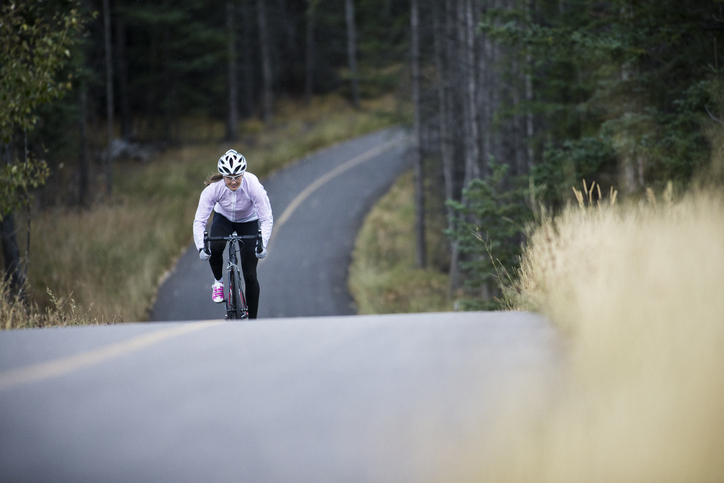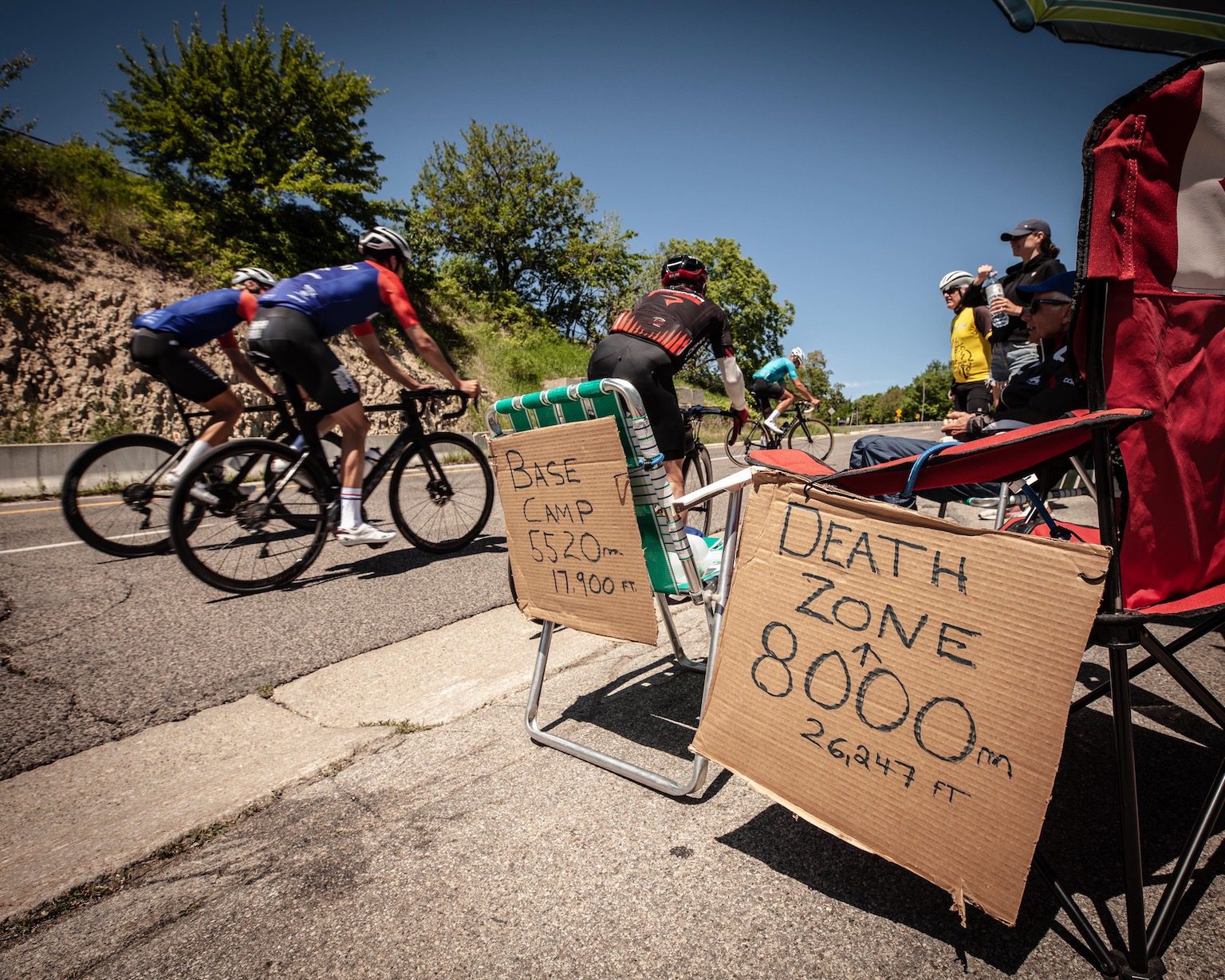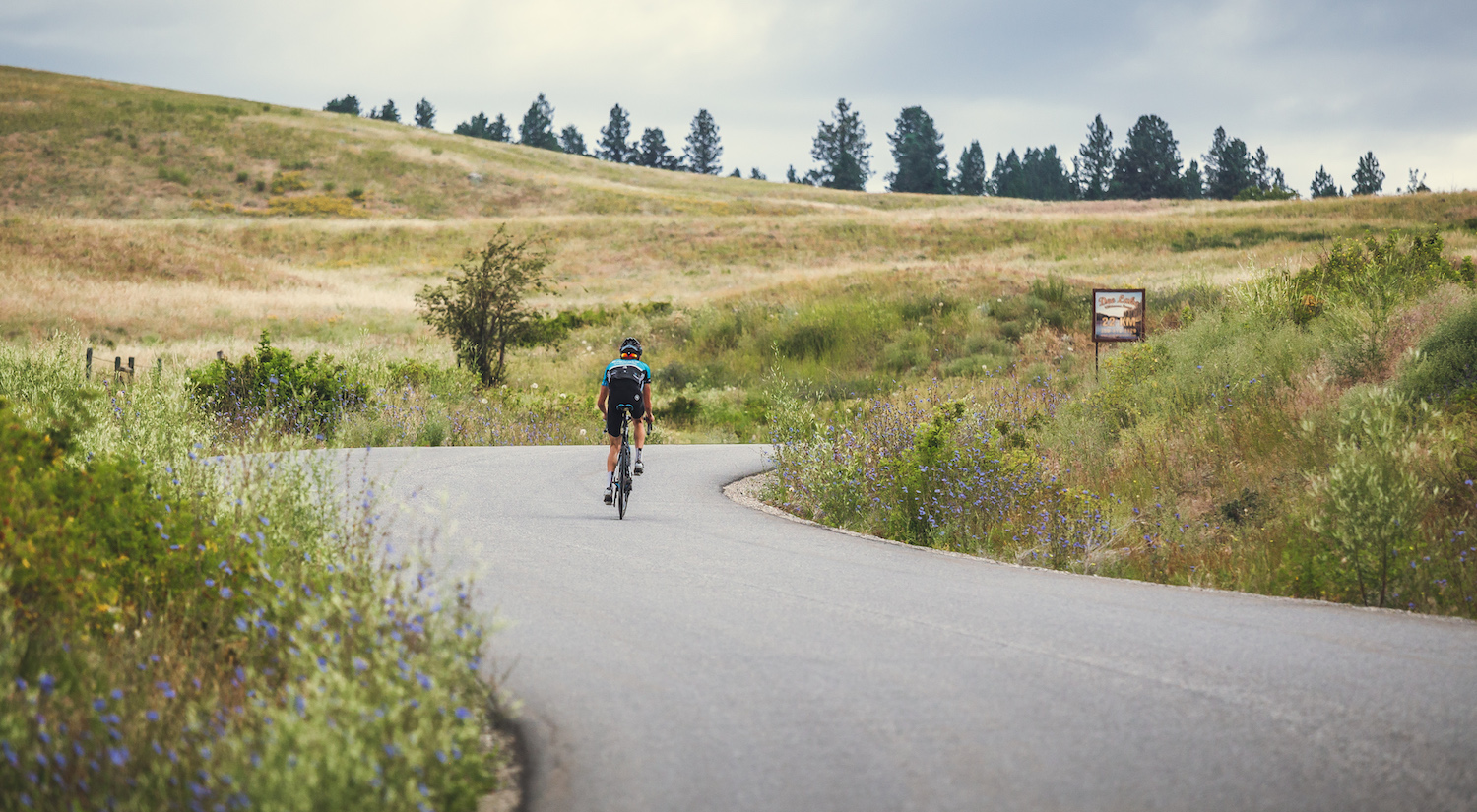Hill climbing tips from past and current Canadian Everesting record holders
Advice on power, cadence, gearing and training

Hills are hard, and, in the words of Greg Lemond, “It never gets easier, you just get faster.” Despite the struggle, a ride with lots of elevation can be fun and satisfying if you’re able to feel good about your performance on the hills. We got the current Canadian Everesting (climbing 8,848m in one ride) record holder and some of the past Canadian record holders to share their tips for riding up that hill with no problems.

Gears and muscles
Jeremy Rae nabbed the Canadian Everesting record in June of last year, with a time of 10 hours and 27 minutes. He says proper gearing will make a big difference in your experience when taking on a hilly ride. “Make sure to have proper gearing for the hill you’re climbing,” says Rae. “The easiest solution is to swap for a larger cassette, but the longer term solution, especially if you live somewhere hilly, is to get smaller chainrings. I switched from 53/39 to 52/36 and haven’t looked back.”
He also notes that climbing involves muscles you wouldn’t normally use. Rae suggests practicing out-of-saddle climbing. “This riding style engages different muscles and allows you to rock the bike back and forth below you as you get up the hill,” he says. “Depending on the length of the climb, I usually use a combination of sitting and standing.”
Control your power
In July 2020, 29-year-old Jordan Cheyne (Elevate – Webiplex Pro Cycling) Everested on Kelowna’s Beaver Lake road in 8 hours and 12 minutes. The cyclist, who also coaches, knows a thing or two about climbing.
RELATED: The secrets to a successful Everest: Tips from from the Canadian record holder
Cheyne says that it’s important to be conscious of how hard you’re pushing going into a hill. He suggests gradually rolling onto the power as you come into climbs with momentum. “Riders have the natural tendency to spike power as soon as a hill starts and they feel the inertia on the pedals. That lasts for 10-15 seconds before their punch runs out and they run out of steam,” says Cheyne. Gradually rolling onto the power is particularly important to keep in mind for rollers and shorter climbs that you start at a higher speed before the gradient saps your momentum.

To get up climbs as quickly as possible in races, group rides and, especially during time trials, Cheyne suggests putting down the most power when you are going the slowest. “Instead of starting a climb at 400W while you are still going 30-40 km/h and finishing it at 250W when you are going 15 km/h, do the opposite,” he says. “Start the climb at 250W and gradually increase your power so that you can hit it hard once your speed levels off and [you’ll] get over the top with speed. The same goes when considering an attack—it’s a lot easier to create separation when the group is going slower, even 30 seconds into a climb, then it is at the very bottom.”
Power, planning and cadence
The current Canadian Everesting record was set by Jean-Michel Lachance in September 2020. The cyclist rode Mur du mont Bélair in Québec in 8 hours and 8 minutes. Lachance, who prefers hilly train to flat rides, says to get better at climbing, you need to plan lots of climbing into your training. “I believe that in order to improve your climbing one needs to do climbs regularly,” he says. As mentioned by Rae, the muscle recruitment of climbing is a bit different.
He says riders who want to improve their climbing should look to improve their power. “Some of my favourite and hardest training sessions are the ‘smart soviet’ intervals which consist of doing increasingly fast hill repeats,” says Lachance. “When I do those intervals, I do not look at my power and I rely on feel. By doing so, I often surprise myself and get to know my limits pretty well which is also a good skill to have for climbing. When choosing relatively small climbs, this allows you to do lots of repeats with much lower fatigue generated. [Its] as if you would do the same amount of climbing on longer climbs.”
“Doing hill sprints with longer recovery in between is also a very good way to increase your maximum power. The idea is: If you are able to go up a climb at X speed, it becomes relatively easy to climb it at a more moderate pace.”
His last tip has to do with cadence. “Over the years, I found that some of my best climbing performances came after blocks of high-cadence work such as track training.” He says it has to do with training adaptation which gives you “another gear and cadence flexibility.”
“For instance, in a race, when your legs are cooked, you can turn your legs a bit faster on a lower gear and keep up with the front.”
